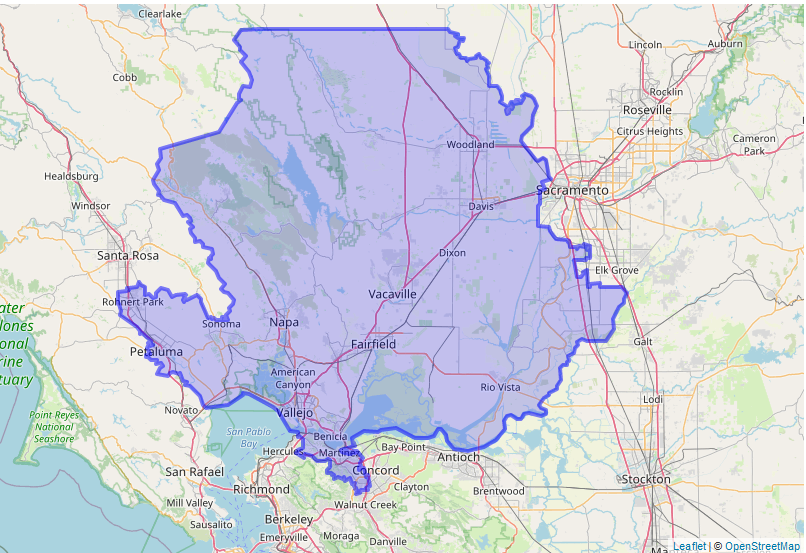Our telecom friends have caused a new Senate Bill to be in the hopper in Sacramento. SB 378 would require local governments to permit the use of microtrenching (add that term to your spellcheck dictionary now) for the installation of new fiber optic cables.
Public Works Directors and City/County Engineers around the state are likely to have real problems with the text of the bill because of their experiences with microtrenching, including without limitation to the difficulties in achieving safe and long-term reliability of these small width and limited depth trenches. Even more troubling is the proviso that “[t]he provider of fiber facilities shall determine the method of the installation of fiber.”
Here’s the current proposed text of the legislation (as of the date of introduction, February 10, 2021):
CALIFORNIA LEGISLATURE— 2021–2022 REGULAR SESSION
Senate Bill
No. 378
Introduced by Senator Gonzalez
(Coauthors: Senators Hertzberg and Wiener)
February 10, 2021
An act to add Sections 65964.5 and 65964.6 to the Government Code, relating to local government.
LEGISLATIVE COUNSEL’S DIGEST
SB 378, as introduced, Gonzalez. Local government: broadband infrastructure development project permit processing: microtrenching permit processing ordinance.
Under existing law, the Public Utilities Commission has jurisdiction over public utilities, including electrical corporations. The commission’s existing Electric Tariff Rule 20 establishes policies for the undergrounding of electric facilities and includes, among other programs, the Rule 20A undergrounding program , which requires electrical corporations to convert overhead electric facilities to underground facilities when doing so is in the public interest for specified reasons.
This bill would authorize a provider of fiber facilities to determine the method of the installation of fiber. The bill would prohibit a local agency, as defined, from prohibiting, or unreasonably discriminating in favor of or against the use of, aerial installations, open trenching or boring, or microtrenching, but would authorize a local agency to prohibit aerial deployment of fiber where no aboveground utilities exist due to Electric Tariff Rule 20 or other existing underground requirements.
This bill would require a local agency to allow fiber to be installed in the same fashion as the existing aboveground utilities where aboveground utilities are present. The bill would provide that this provision controls over any undergrounding ordinance adopted by the local agency that requires all utilities to bury existing overhead facilities pursuant the Overhead Conversion Program established by the commission pursuant to Electric Tariff Rule 20. The bill would require a local agency to allow microtrenching for the installation of underground fiber if the installation in the microtrench is limited to fiber. By imposing new duties on local agencies with regard to the installation of fiber, the bill would impose a state-mandated local program.
Existing law, the Permit Streamlining Act, governs the approval process that a city or county is required to follow when approving, among other things, a permit for construction or reconstruction for a development project for a wireless telecommunications facility and a collocation or siting application for a wireless telecommunications facility.
This bill would authorize a city or county to impose on an applicant for a permit for a broadband infrastructure development project a reasonable fee for costs associated with the submission, and the expedited review, processing, and approval of an application, including, but not limited to, personnel costs as necessary, if the applicant elects for the expedited review and processing and agrees to pay that fee.
The California Constitution requires the state to reimburse local agencies and school districts for certain costs mandated by the state. Statutory provisions establish procedures for making that reimbursement.
This bill would provide that no reimbursement is required by this act for a specified reason.
Digest Key
Vote: MAJORITY Appropriation: NO Fiscal Committee: YES Local Program: YES
Bill Text
The people of the State of California do enact as follows:SECTION 1. This act shall be known as the Broadband Deployment Acceleration Best Practices Act of 2021.
SEC. 2. The Legislature hereby finds and declares all of the following:
(a) Californians need improved access to high-speed internet now more than ever to meet a variety of demands including, but not limited to, remote work, distance learning, telehealth, emergency response and public safety, agriculture, innovation, and commerce.
(b) High-speed internet is delivered to Californians through wireline and wireless broadband infrastructure that is installed either aerially or underground. Wireless broadband service relies on wireline facilities, especially fiber backhaul lines.
(c) Deployment of fiber is critical to connect more Californians to high-speed internet.
(d) Quick and cost-effective ways to install fiber include trenching and boring, microtrenching, and aerially using existing utility poles or other vertical infrastructure along the intended fiber route.
(e) By allowing these different methods of fiber installation and expediting fiber permit applications, local agencies will help promote the deployment of fiber for high-speed internet access across California.
SEC. 3. Section 65964.5 is added to the Government Code, to read:65964.5.
(a) For purposes of this section, the following definitions apply:
(1) “Fiber” means fiber optic cables, and related ancillary equipment such as conduit, ancillary cables, hand holes, vaults and terminals.
(2) “Local agency” means a city, county, city and county, charter city, special district, or publicly owned utility.
(3) “Microtrench” means a narrow open excavation trench that is less than or equal to 4 inches in width and not less than 12 inches in depth and not more than 26 inches in depth and that is created for the purpose of installing a subsurface pipe or conduit.
(4) “Microtrenching” means excavation of a microtrench.
(b)
(1) The provider of fiber facilities shall determine the method of the installation of fiber.
(2) A local agency shall not prohibit, or unreasonably discriminate in favor of or against the use of, aerial installations, open trenching or boring, or microtrenching.
(3) Notwithstanding paragraphs (1) and (2), a local agency may prohibit aerial deployment of fiber where no aboveground utilities exist due to Public Utilities Commission Electric Tariff Rule 20 or other existing underground requirements.
(c) Fiber installations subject to this section shall be subject to both of the following:
(1) Where existing aboveground utilities are present, the local agency shall allow fiber to be installed in the same fashion as the existing aboveground utilities. This paragraph shall control over any undergrounding ordinance adopted by the local agency that requires all utilities to bury existing overhead facilities pursuant to the Overhead Conversion Program established by the Public Utilities Commission pursuant to Electric Tariff Rule 20, except that the provider of fiber facilities shall underground its fiber at the time other utilities remove their aerial facilities pursuant to any undergrounding ordinance of the local agency.
(2)
(A) The local agency with jurisdiction to approve excavations shall allow microtrenching for the installation of underground fiber if the installation in the microtrench is limited to fiber.
(B) Upon mutual agreement, a microtrench may be placed shallower than 12 inches in depth in areas that are not beneath a paved roadway.
(d) For purposes of this section, the time periods established by the applicable Federal Communication Commission rules contained in Subpart U (commencing with Section 1.6001) of Part 1 of Subchapter A of Chapter I of Title 47 of the Code of Federal Regulations for a small wireless telecommunications facility using an existing structure shall apply to an application for a fiber installation.
(e) An application for a permit to install fiber shall include payment of a reasonable fee set by the local agency to cover the cost of processing the application.
(f) This section does not preclude an applicant and the local agency from mutually agreeing to an extension of any time limit provided by this section.
(g) The Legislature finds and declares that installation of fiber is critical to the deployment of broadband services and other utility services, is a matter of statewide concern, and is not a municipal affair as that term is used in Section 5 of Article XI of the California Constitution. Therefore, this section applies to all cities, including charter cities.
SEC. 4. Section 65964.6 is added to the Government Code, to read:65964.6.
(a) For purposes of this section, the following definitions apply:
(1) “Applicant” means a person or entity who submits an application.
(2) “Application” means an application for a permit to install fiber.
(3) “Local Agency” means a city, county, city and county, charter city, special district, or publicly owned utility.
(4) “Personnel costs” includes the costs of hiring or employing temporary or permanent local agency employees, consultants, or contractors.
(b) A local agency may impose on an applicant a reasonable fee for costs associated with the submission of, and the expedited review, processing, and approval of, an application, including, but not limited to, personnel costs as necessary, if the applicant elects for the expedited review and processing and agrees to pay that fee.
(c) This section does not amend or alter the civil service laws of this state or any local agency.SEC. 5. No reimbursement is required by this act pursuant to Section 6 of Article XIII B of the California Constitution because a local agency or school district has the authority to levy service charges, fees, or assessments sufficient to pay for the program or level of service mandated by this act, within the meaning of Section 17556 of the Government Code.
Public Works Directors and City/County Engineers should start discussing the bill text with each other with an eye to addressing key issues.
I expect that the LCC will get involved. There’s a lot to talk about, and to talk about very soon.


